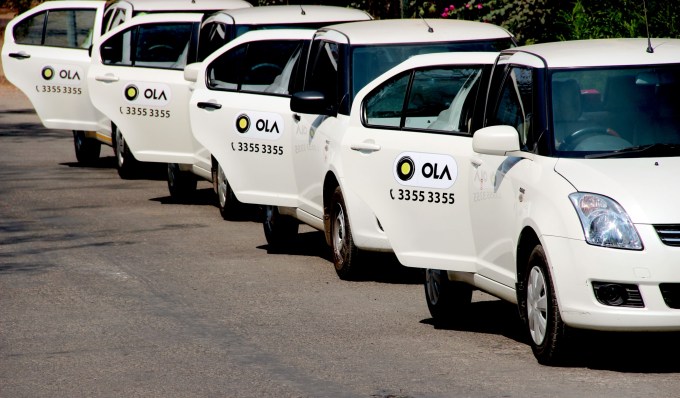If you live in the U.S., the chances are that your definition of the biggest rival to Uber is Lyft. The ride-sharing service operates in many of the same U.S. cities as Uber, and the two have a keen rivalry, which includes some less-than-ethical practices on both sides. But a new, less obvious, force has emerged out of Asia to offer Uber its stiffest competition yet: and surprisingly it is a telecom company.
SoftBank had no business in taxi-hailing apps until October 2014 when it led a $210 million investment in India’s Ola. That deal was announced as the first investment in SoftBank’s program to put $10 billion into startups in India. At the time, Ola appeared to be just one of a number of deals in India — while that is true, it also turned out to be the first of an expensive set of investments in companies that rival Uber.
SoftBank went on to invest $250 million in GrabTaxi in Southeast Asia, and last week it closed a third deal, leading a $600 million financing round for China’s Kuadi Dache.
The operator, it seems is going all out for taxi apps but it may not stop in Asia.
Alibaba led Lyft’s $250 million funding round in April 2014, which the U.S. company had earmarked for “international expansion”. At the time, the investment was a curious deal for Alibaba but, with the e-commerce giant backing range of other U.S. startups — including chat app Tango — it looked like an exploratory move to get some skin in promising companies in North America.
However, SoftBank and Alibaba have a long history of collaboration — SoftBank is famously an early investor in Alibaba, and both companies put money into Kuadi Dache — and it could just be that Lyft forms a part of SoftBank’s taxi app focus. Perhaps the Japanese firm will put its own money in at a later date, or it will use its relationship with Alibaba to form a loose alliance to share information and tactics.

So why is SoftBank in the market for taxi apps?
The push is part of SoftBank’s aforementioned program to invest in e-commerce businesses in emerging markets. It put $100 million into Indonesia’s Tokopedia last year, for example, and it has also backed Snapdeal (via a $627 million round) and Housing.com in India.
There’s plenty of reason to believe that SoftBank plans to weave its e-commerce investments together — perhaps via app integrations and formal tie-ins, or just sharing of information, experiences, etc, between these companies.
Adding taxi apps to its portfolio of investments is important because transportation-on-demand services have the potential to be hugely influential.
Adding taxi apps to its portfolio of investments is important because transportation-on-demand services have the potential to be hugely influential.
For one thing, they could become daily apps for millions of people to move around, and — for second — they create real-life logistics networks that can be used for all kinds of offline services. Just look at Uber’s potential as a logistics network, for example.
The future of mobile and mobile apps is not clear at this point, as A16z’s Benedict Evans astutely pointed out recently. But what is for certain, however, is that SoftBank believes there will be worthwhile synergies between e-commerce and mobile services in the future no matter whether apps are web-based or not. Taxi apps appear to form a key part of the e-commerce platform that it is in the early stages of assembling.
Uber raised close to $2.5 billion from investors last year, but, with SoftBank valued at around $70 billion (a figure that its CEO believes is too low), the U.S. company may yet return to the table for even more funding as the battle intensifies.
SoftBank declined an interview for this story, but a company spokesperson did confirm that the Japanese firm is “aiming to maximize synergies with our network of Internet companies/investments around the world.”
The spokesperson added that there are no immediate plans to establish links between Ola and GrabTaxi but SoftBank “expects to see some business synergies in the near future.”
